Sailing Part 2: Superstorms and Spanish Tapas
A goodbye to Europe, a hello to the Atlantic Ocean
Sardinia is famous for stunning beaches, crystal-clear waters, and, of course, delectable Italian cuisine. It’s a world-renowned honeymoon spot, a ‘Blue Zone’ home to happy centenarians, and an all-around bucket list destination. When Captain Maria first informed me we’d be stopping in Sardinia, my head filled with visions of gelato, snorkeling, and pizza on the beach.
Instead, I’ll always remember Sardinia as the place where I experienced Storm Ciarán.
Having grown up in Houston, I’m no stranger to named storms. My childhood was marked by a patchwork of hurricanes, each making its own, indelible impression on my community. Katrina spared us, but brought an influx of transfers to my school, some of them staying for years in an early example of American climate migration. My family spent 24 hours trapped on the highway during Rita, crawling through gridlock. Harvey was the storm that made the biggest mark, flooding our home and kicking my parents out for weeks as they scrambled to repair the damage.
But there was something different about confronting an extreme weather event from the exposure of a 40-foot sailboat. Although we were inside the relative safety of the marina, we were far from shielded from the storm’s effects. One night, a 50-knot wind started gusting. Not having anticipated that level of blow inside the marina, the captains hadn’t tied down the sailboats to withstand the weather.
The boats started knocking against the dock with extreme force. The winds chewed up lines and damaged the stern. The whole crew had to work on the boats well past 2 a.m. to try and minimize the damage. Even after we’d neutralized the situation, it was impossible to fall asleep to the noise of waves and wind thrashing against the hull.
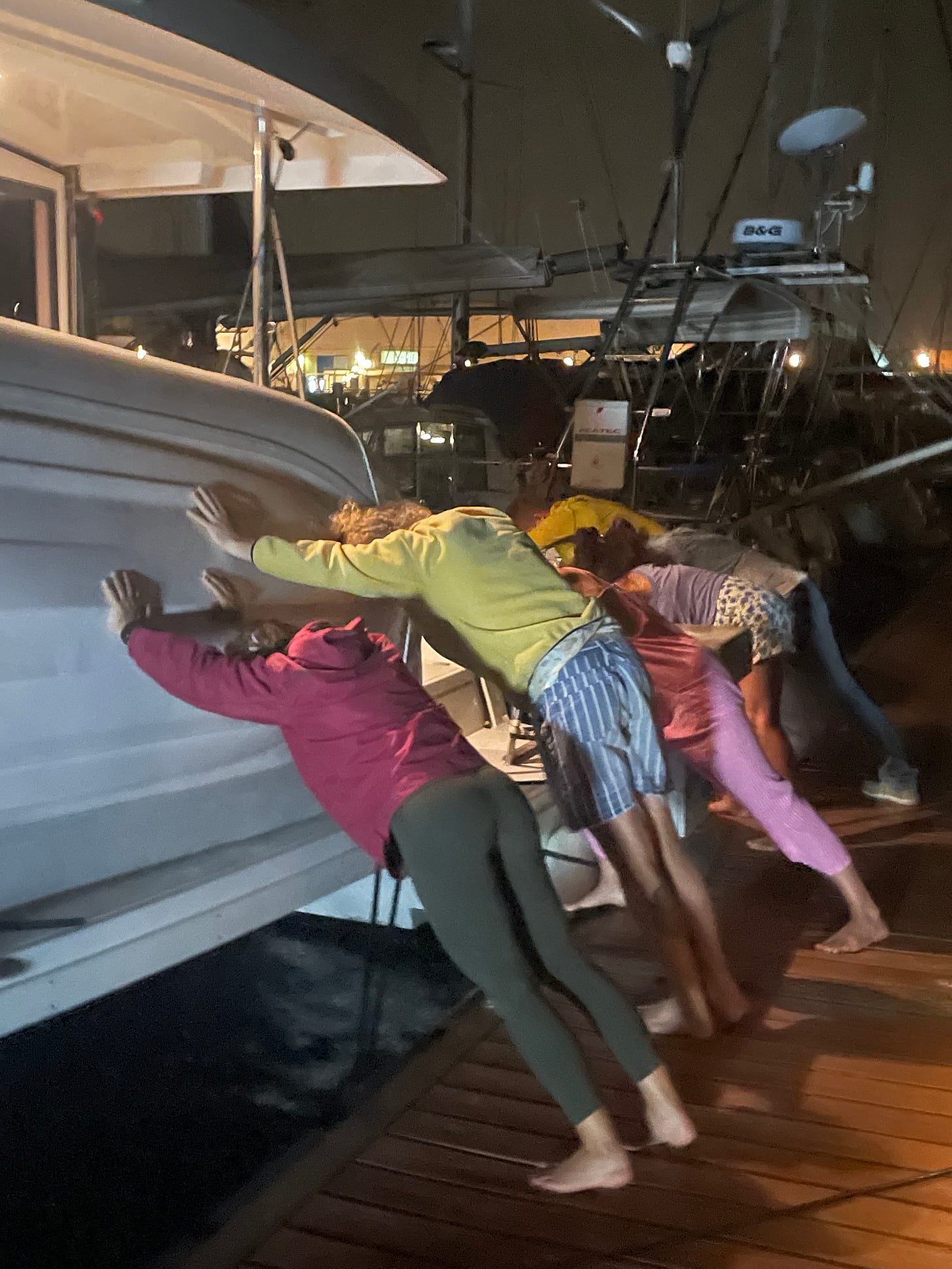
At the end of the day, our crew got off easy compared to those in the heart of the storm. No one was hurt, and the damage to the boats was minor in the grand scheme of things. But the episode was a sobering reminder that climate change isn’t just causing rising temperatures and droughts. Around the world, the human fingerprints on extreme weather are becoming more and more incriminating.
Ongoing analysis from Carbon Brief indicates that out of a carefully balanced dataset of 504 extreme weather events, 71% were found to be made more severe or more likely to occur because of human influence.
I’m writing about this because especially in the winter months, it isn’t always easy for us to link the abstract concept of climate change with the ‘weird’ weather we feel on our skin.
Chances are that no matter where in the world you live, if you ask your friends and neighbors, most of them have lived through an extreme weather event amplified by climate change.
For us, Storm Ciarán was actually just one among a few we experienced during Summer 2023: freakish hailstorms in Southern France, wildfire smoke in Athens, high winds in Northern Italy. It’s important to speak the truth about these events: they are increasing in frequency and severity because of climate change. This short letter to The Guardian by John Uden provides one such rhetorical strategy:
Instead of naming storms after “those who work to keep people safe in times of severe weather”, thereby making these severe disruptions sound innocuous, it would be more appropriate to use the names of fossil fuel companies and the manufacturers of SUVs. Cutting through the marketing devices that keep greenwashing potent is a crucial step on the long road to the necessary reforms.
Making direct links between the polluters and the impact they cause is an urgent next step – as in “tomorrow’s terrible weather is Storm Esso, Storm Shell, Storm Range Rover” and so on.
What do you think about naming superstorms after big polluters? Is it a useful rhetorical strategy with the capacity to create change, or a low priority on the climate solutions to-do list? Would love to hear some debate in the comments.
OK, I’m done with the ‘climate’ part of this piece. Back to the travel!
Woah, we’re going to Ibiza
Upon leaving Sardinia, the goal was to make a straight six-day sail to Gibraltar, do a quick provisioning at a Spanish supermarket, and bid farewell to the Mediterranean. At this point, Storm Ciarán had already cost us a week of travel time, and the captains were eager to make it to the Caribbean before December 25th so they could work the all-important week between Christmas and New Year’s.
Do you remember the first lesson of sailing? Nothing goes according to plan. We made it less than 24 hours before the wind speed increased, and we found ourselves battling yet another nasty headwind. Since everyone on the crew was pretty tired from our not-so-restful rest week in Sardinia, the captains made a call: we’re going to Ibiza!
Ibiza was NOT a place I’d pictured us traveling on our low-carbon, green world tour. It’s more famous for megayachts and clubbing than sustainability. But it ended up being a really incredible stop because in mid-November, the party scene is officially done for the season. We ended up getting to see Ibiza like no one else does: empty of tourists.
Devoid of the glamor and hubbub, Ibiza was actually quite beautiful. The whitewashed walls of the city shined at night, and we felt like we had the place all to ourselves. The only thing that gave me pause was thinking about how much energy and space was going to waste on the island without the tourism industry. Food for thought: what if the empty AirBnbs and hotel rooms covering the island could be put to good use — for hosting refugees, or students — during the low season?
Fighting the fog
The departure from Ibiza was idyllic. With the headwinds finally gone, calm seas ahead promised a few long, lazy days of sailing. We’d be close to the Spanish coastline for most of the sail plan, so maybe we would even have cell phone reception! I took out a deck of cards, downloaded a few books, and made plans for a few days of well-deserved chilling.
There was just one problem: when the wind stopped blowing, the fog rolled in.
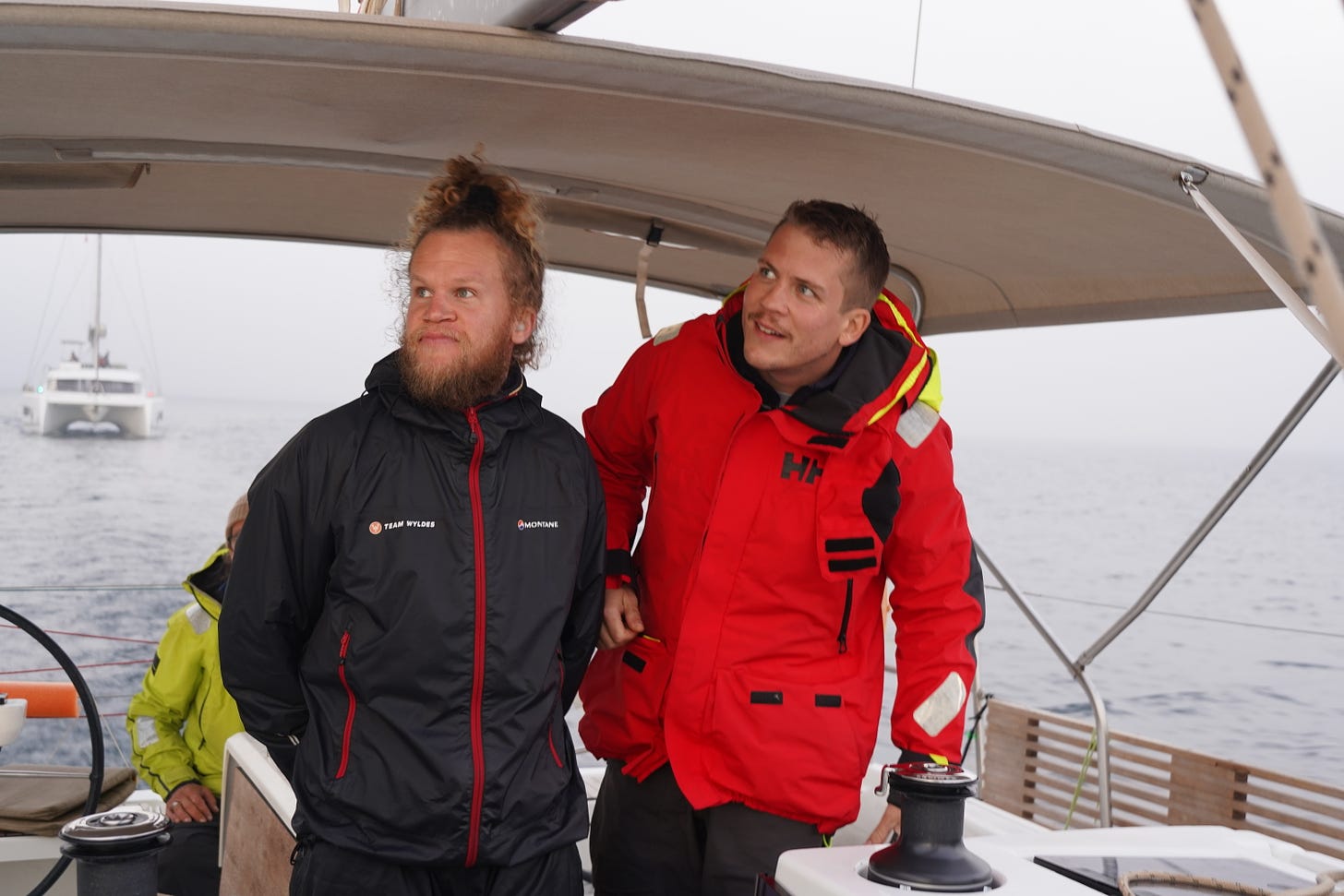
Despite the crazy wind conditions and seasickness we’d already endured, I think the fog was by far the scariest part of the sailing trip. Out of nowhere, the deep, bright blues of sea and sky gave way to a thick grey monochrome. The coastline and other boats disappeared entirely from view, and we had to be extra-vigilant as we sailed, as risk of collision increased exponentially in the poor visibility.
But the hardest part was definitely night watch in the fog. When I went up at 10 p.m. for my post, I could barely see two feet in front of me as I climbed carefully to the captain’s chair on the catamaran. I settled into my watch, vigilant as ever, when suddenly, I heard splashing noises around me.
It was dolphins! While we’d been lucky enough to sail with dolphins several times already, this was the first time they came with such quantity — and they stayed for the duration of my three hour watch. These playful animals were drawn to the dim light of the boat in the darkness, and kept me and Oli (who was watching from the monohull) company all through the night.
Farewell to Europe
The arrival in Gibraltar was equal parts emotional and harrowing. For Polo in particular, the sight of the famous Rock of Gibraltar was extra-meaningful. Although at this point we’d been on the road (and water!) for more than six months, we were never far from France-based family and friends. Our stop in Gibraltar — the final one in continental Europe for a few years — represented a big shift. We were officially leaving the comforts of home behind and setting out into the true unknown.
In Gibraltar, we toasted a farewell to Europe with a sunset beer, and promptly fell asleep. We spent a few days ashore, where Captain Maria introduced us to one of her favorite local tapas restaurants in La Linea (the Spanish town just outside of Gibraltar). While we’d sampled tapas a few times before, it was a different experience entirely to dine with a Spaniard. Let’s just say Americanized classics like patatas bravas and tortilla were not on the menu.
At tapas, we also met a crew of French sailors, led by Filou and Laure (you may remember them from this earlier post) who were also doing the transatlantic crossing and leaving from Gibraltar shortly. We made arrangements to add their sailboat to the flotilla for the Gibraltar - Canary Islands leg, and just like that, our two boats became three! There was safety in numbers; crossing the Strait of Gibraltar required passing through dreaded orca territory.
We left from Gibraltar early the next morning on high alert. Aboard the catamaran, all four of us perched on the roof, each watching one side of the boat for any potential orcas nearby. At one point, I saw and screamed (accidentally): DOLPHINS!
That gave everyone quite a fright. But after a few hours more of sailing, we were officially out of the danger zone, and in the Atlantic Ocean! We watched the coast of Morocco pass by and we turned southward. It would be a week of sailing until we touched land again. Next stop, the Canary Islands!





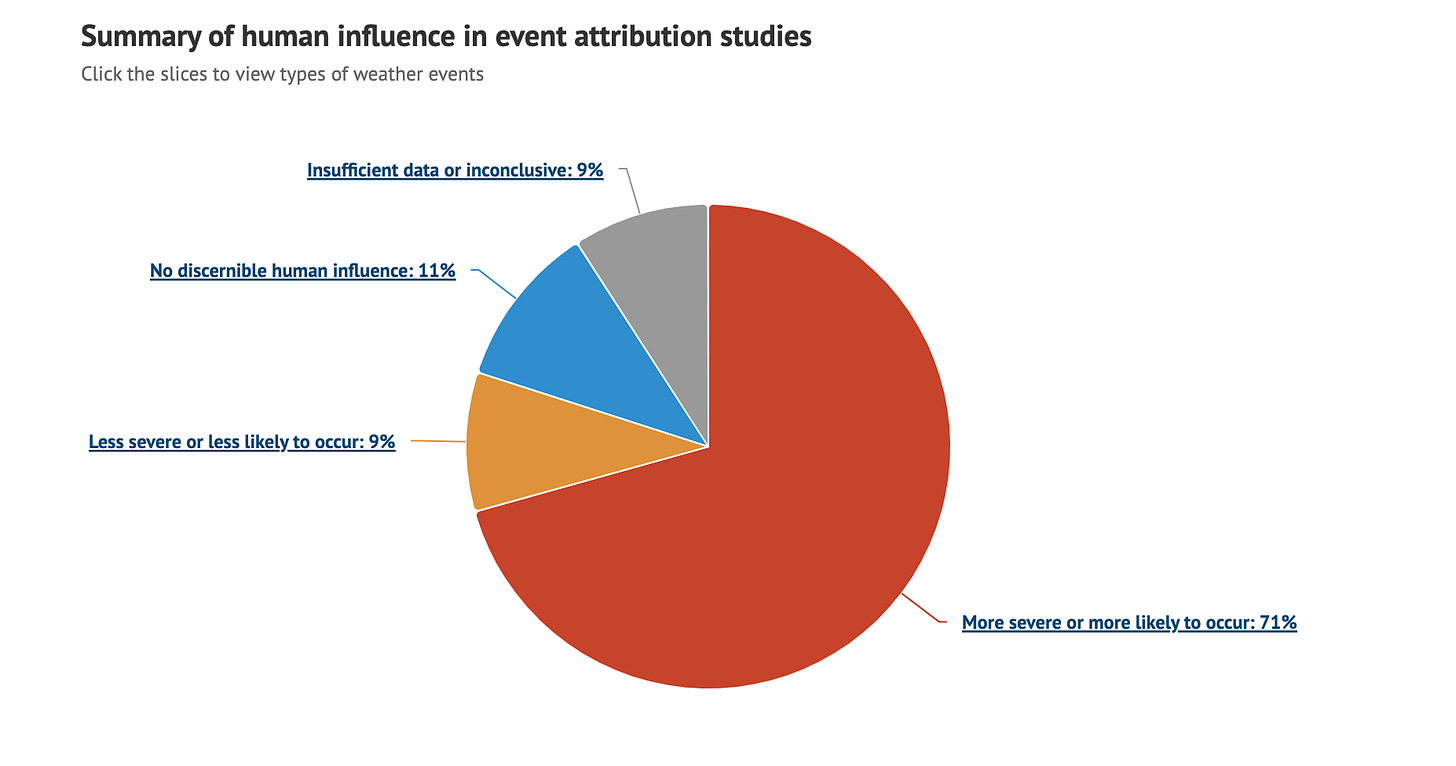
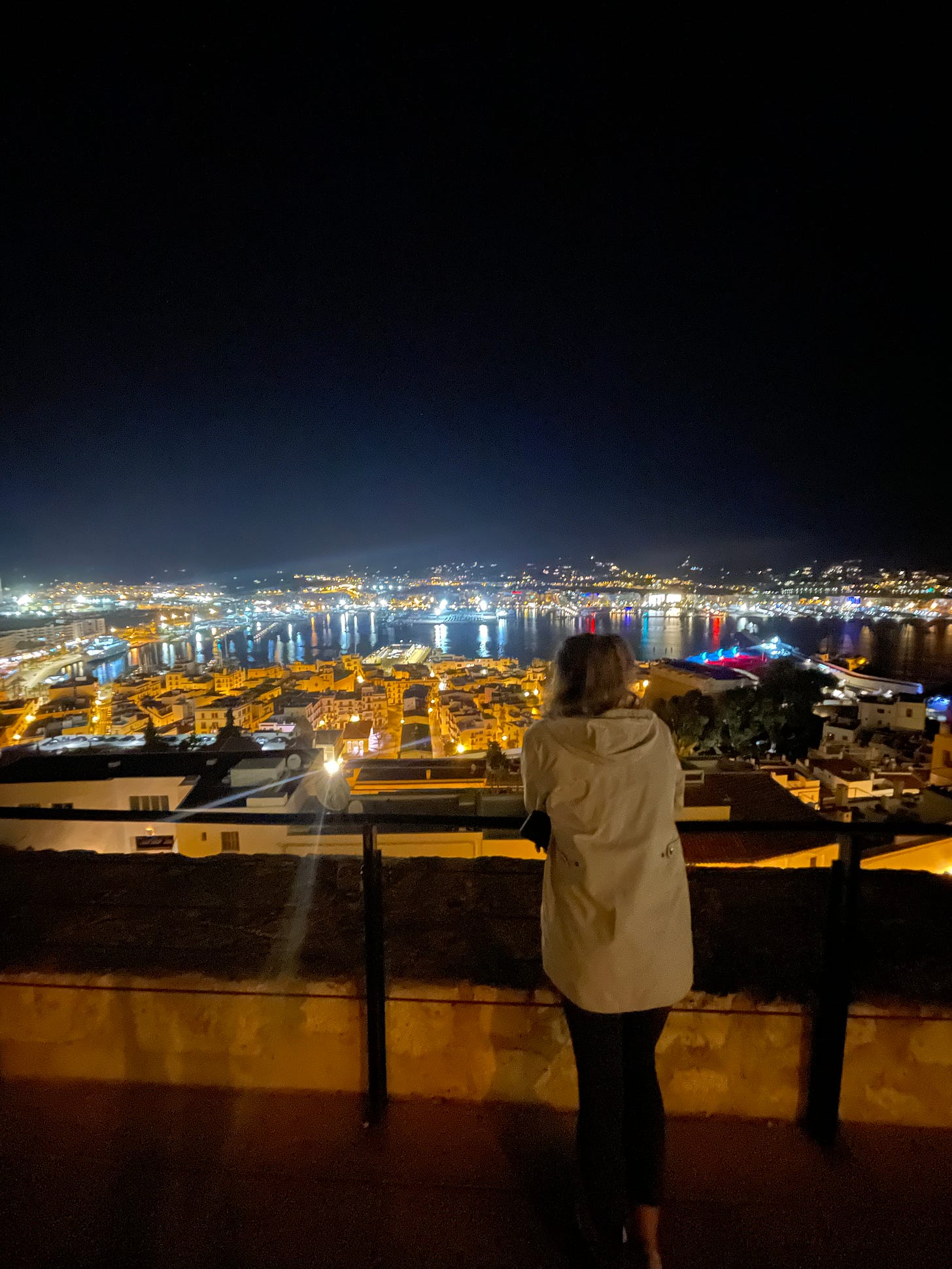
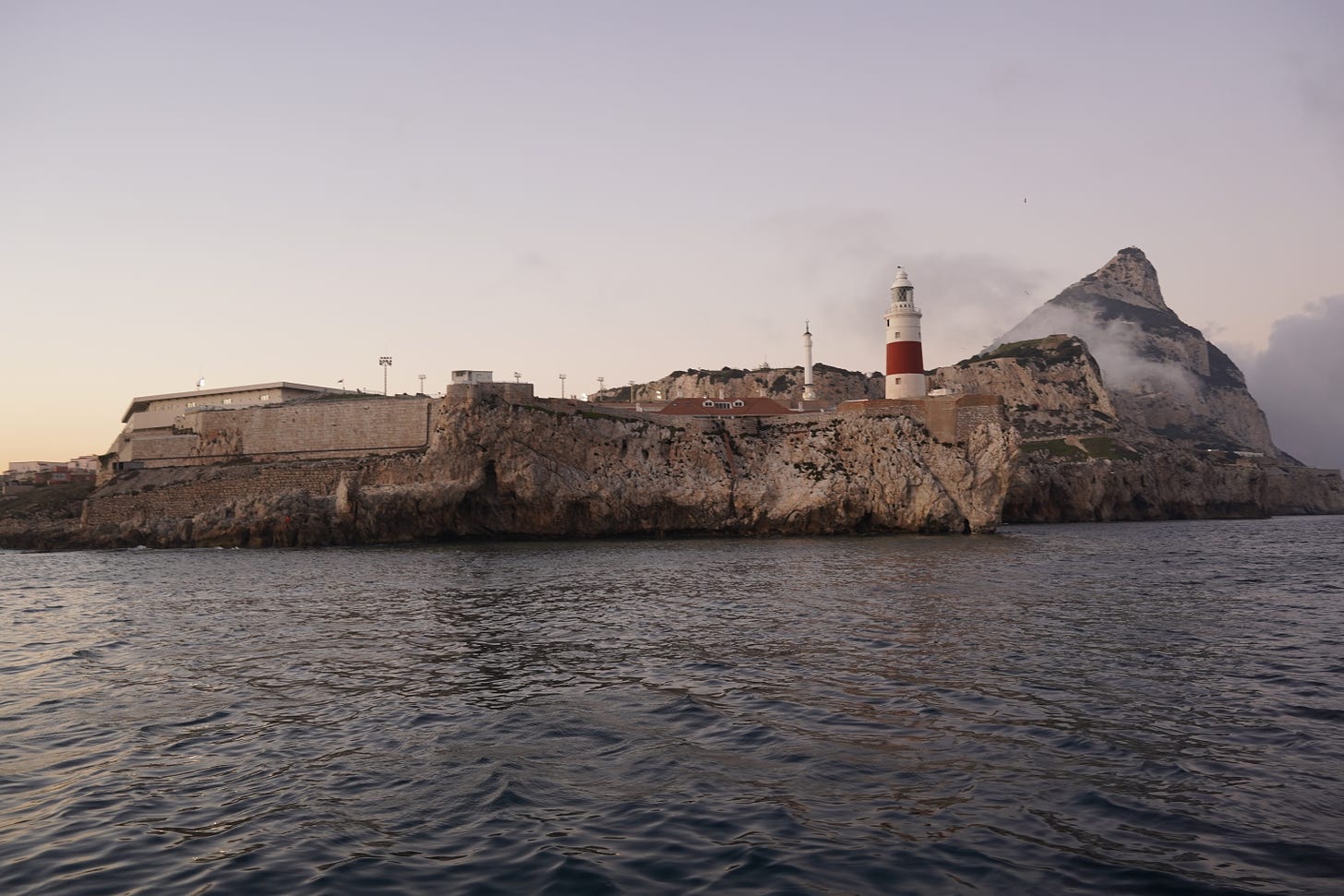
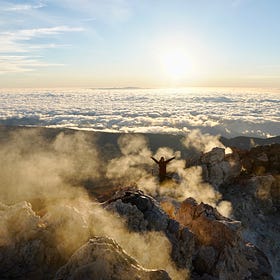

I love the idea of naming big weather events after big polluters!